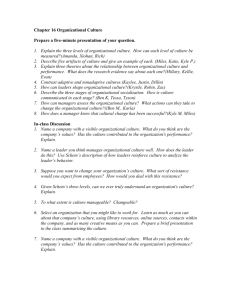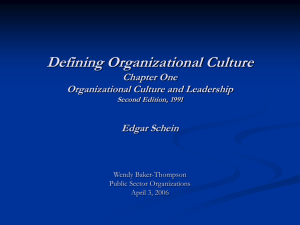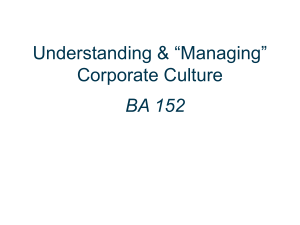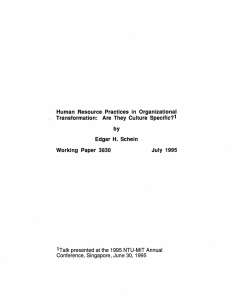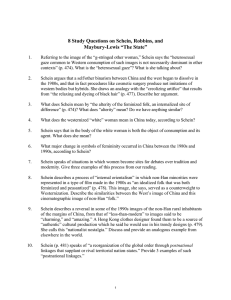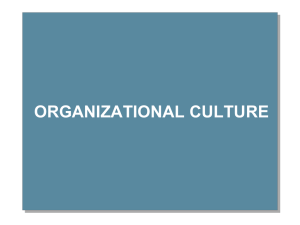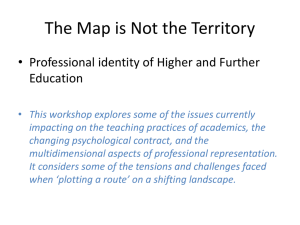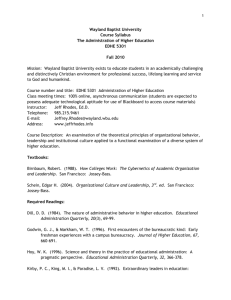Lion tamers and horse whisperers – shaping workplace cultures
advertisement
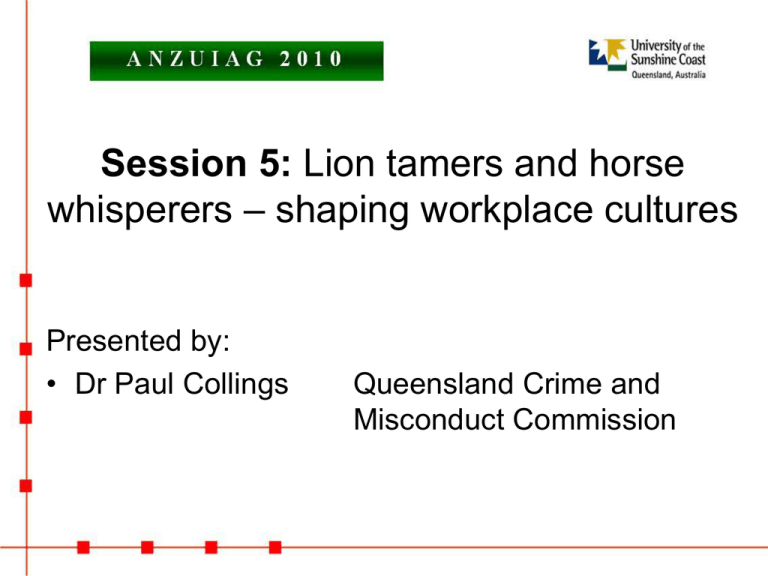
Session 5: Lion tamers and horse whisperers – shaping workplace cultures Presented by: • Dr Paul Collings Queensland Crime and Misconduct Commission Lion Tamers and Horse Whisperers Shaping Workplace Cultures Paul Collings Senior Prevention Adviser Research and Prevention Crime and Misconduct Commission Corrupt Cultures Examples Parks and gardens Executive suite Facilities maintenance Culture “the climate and practices that organisations develop around their handling of people, or … the espoused values and credo of an organisation” [Schein 7] “Culture is to a group what personality or character is to an individual. We can see the behaviour that results, but often we cannot see the forces underneath that cause certain types of behaviour.” [Schein 8] Edgar H. Schein, Organizational Culture and Leadership. 3rd Edition. San Francisco, Jossey-Bass: 2004. How are cultures formed? “a group’s culture is the result of that group’s accumulated learning … once a group has a culture, it will pass elements of this culture on to new generations of group members.” [Schein 18] Edgar H. Schein, Organizational Culture and Leadership. 3rd Edition. San Francisco, Jossey-Bass: 2004. Diagnosis Complaints Risk factors Isolation Work environment Rhetoric Underlying assumptions Isolation “individuals will be more likely to share in ethical reasoning and moral intent with members of their own functional group (in-group) than with members of other functional groups (out-group).” Neil A. Granitz and James C. Ward. “Actual and perceived sharing of ethical reasoning and moral inent among in-group and out-group members.” Journal of Business Ethics 33 (4) 299-322, October 2001. p.299 Working Environment Physical environment Work practices Operational structures General morale Rhetoric Public utterances False signals Quality of output Language Tales and legends Underlying Assumptions Positive Negative Old-fashioned work ethic Work-evasion ethic We are working to a common goal Our team has to stick together for protection We are at the cutting edge We are a neglected back-water Surveys Response to Surveys: Managers’ trust in information sources – percentage. 45 40 Observed fact 35 Graph 30 25 Reliable Report Never believe anything 20 15 10 5 0 2001 2003 2005 2007 2009 [Source: http:/phoneegraphs.con] What to do? Recommendation 8 “That the Department of Transport establish a corporate culture that values, and is inclusive of, all staff and operational areas.” Western Australia’s Corruption & Crime Commission. Report on the investigation of alleged public sector misconduct by employees of the Department for Planning and Infrastructure in relation to the inspection, licensing and registration of motor vehicles. 16 September 2010 Lions and horses Targeting key people Shedding light Creating expectations Systems Deterrence Leadership Key People Avoidance and resistance Denial Transference Deal-making Shedding light Education for Direct moral instruction Case studies, role plays, hypotheticals Practical projects Value clarification Empowerment, autonomy Empathy development Workplace experiences Motivation Creating expectations Uncertainty Codes and policies Modelling Prevention tools Risk Management plans Systems Corporate plans Codes of conduct Policies and procedures Internal reporting Internal auditing Recruitment Performance management Continuous improvement Training Leadership Implementation Communication New technologies Learn from complaints Avoid patchwork Deterrence Dismissals Legal constraints Rewards Leadership Integrity Acceptance Visibility Shaping Cultures Symptoms Complaints Strategies Isolation Work environments Rhetoric Underlying assumptions Key people Shedding light Expectations Systems Deterrence Leadership Organisational approach Discussion Dr Paul Collings Crime and Misconduct Commission (07) 3360 6381 paul.collings@cmc.qld.gov.au Case study Allegation: misappropriation of private sector grant funds. In 2008 the University received a grant for specified research purposes from the Perfectly Upright Corporation (PU Corp). It is alleged that Professor Julius Flitwick illegally (or inappropriately) used the money to: Buy two new laptops, one for his home and the other to use at work Employ a research assistant who “just turned up one day” and who was later overheard to mention that her mother is one of the Directors of PU Corp Case study Background information: The Professor refuses to submit costings for the research project through the usual university processes and has explained to the finance section that he does not need to because he is personally contracted to the project rather than through the university The Professor uses University resources to carry out the research project The website for PU Corp includes a press release that states that the Professor has a part ownership in the intellectual capital for the finished project Discussion Tenure and ossification Academic vs. Administration Research funding and ethics

